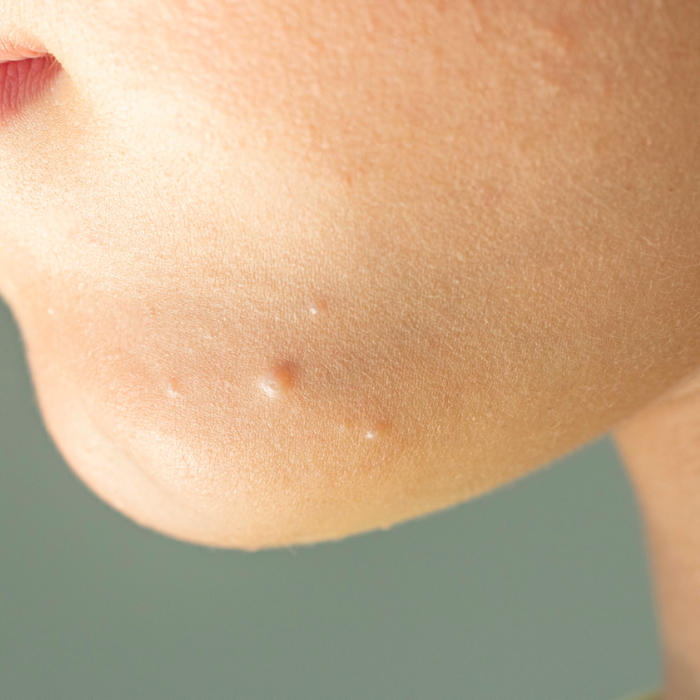
When it comes to nutrition, everyone is hunting for the “next big thing”, but what about the tried and true nutrition components in our diets? Dietitian Angela Phillips tells what we need to know about omega 3s.
Omega 3s are polyunsaturated fatty acids and are most certainly tried and true nutrition components in our diets.
They’re scientifically proven to provide significant nutritional benefit for all ages and stages, such as:
- Improved brain function
- Support for growth and development
- Reduced inflammation
- Reduced risk of heart disease, cancer and arthritis
- Improved cognitive function – memory and Performance
As our bodies cannot make all types of omega 3 and the amounts we do make are inadequate, we rely on our food intake to provide these essential nutrients.
SIGNS OF DEFICIENCY IN OMEGA 3 INCLUDE:
- Fatigue
- Memory loss
- Dry skin
- Heart disease
- Mood swings/depression
- Poor circulation
THE OTHER OMEGA
Another type of polyunsaturated fatty acid is omega 6. This is also an essential fatty acid. Although there is some debate over the levels of the two we should consume, we do know it is important that we focus on consuming adequate levels of Omega 3 rather than focusing on reducing omega 6 within our diet.
Adequate intake of omega 3s has also been shown to significantly reduce triglyceride levels. Recent research shows varying impact from individual to individuals based on their genes. One in two people will be more likely to have elevated triglycerides when omega 3 intake is low. These individuals require up to 1.25g per day. Gene testing can be done, although this is not cheap, so it may be best to boost intake to slightly over the recommended daily intake.
Use the below guide to determine how much you and your children need. AI = the amount observed to be adequate to keep individuals from becoming deficient.
Note – this is not necessarily the optimum intake which is thought to be 610mg in males and 430mg in females.
PREGNANCY
AI = 110-115mg/day
At a time when we know we should be eating at our best, it is often also the hardest and fish can be a tough one to tackle when battling with nausea. Requirements are slightly higher during pregnancy, therefore if you struggle to eat fish while pregnant, ensure you have plenty of the non-marine sources in your diet each day using vegetarian sources. If you are concerned about mercury levels from eating fish, use the guide at right to help keep levels low:
RECOMMENDED SERVING SIZES FOR PREGNANT WOMEN
No restriction necessary
- Anchovy
- Arrow squid
- Barracouta
- Blue cod
- Brill/Turbot
- Brown trout from Lake Ellesmere
- Cockles
- Eel, long or short finned
- Elephant fish
- Flounder
- Gurnard
- Hoki
- John Dory
- Monkfish or stargazer
- Mussels (green and blue)
- Orange perch
- Oysters (Bluff* and Pacific)
- Parore
- Rainbow trout from non-geothermal regions
- Salmon (farmed)
- Scallops
- Skipjack tuna
- Sole (except Lemon sole)
- Southern blue whiting
- Surf clams (eg, tuatua)
- Tarakihi
- Toothfish (Antarctic)
- Warehou (common, silver and white)
- Whitebait
1 serving per 1–2 weeks acceptable
- Cardinal fish
- Dogfish (excluding rig)
- Lake Rotomahana trout
- Lake trout from geothermal regions
- School shark (Greyboy, Tope)
- Marlin (striped)
- Southern bluefin tuna
- Swordfish
3–4 servings per week acceptable
- Albacore tuna
- Alfonsino
- Bass
- Bluenose
- Brill/Turbot
- Ghost sharks
- Hake
- Hapuka (Groper)
- Javelin Fish
- Kahawai
- Kingfish
- Lake Taupo trout
- Leatherjacket
- Lemon sole
- Ling
- Mackerel (blue and jack)
- Orange roughy
- Oreo dories
- Red cod
- Ribaldo
- Rig (Lemonfish, Spotted dogfish)
- Rock lobster
- Sea perch
- Silverside
- Skate
- Snapper
- Trevally
BABIES
0-12months AI = 500mg/day (based on intakes of breastfed infants)
Breast milk contains omega 3 and omega 6; therefore, the dietary needs of breastfed infants are typically sufficient. Formula-fed babies may or may not be receiving these, depending on the type of formula they are fed. Some studies (not all) show visual acuity in breastfed infants was higher than in infants on formulas not containing these long chain polyunsaturated fatty acids. Those receiving formulas that contain long chain polyunsaturated fatty acids have more similar blood levels of fatty acids to breastfed infants. For formula-fed pre-term infants, it is recommended their intake is similar to that of breastfed infants. It is also important that you include sources of omega 3 when you introduce solids. There is no need to delay the introduction of fish into your baby’s diet.
TODDLERS
1-3 years AI = 40mg/day
Research has shown improved developmental scores for infants fed omega 3. Try foods such as tuna toasted sandwiches, smoothies containing flaxseed and leafy greens, fish cakes, and use a canola-based spread instead of butter.
CHILDREN
4-8 years AI = 55mg/day (boys and girls)
9-13 years AI = 70mg/day (boys and girls)
14-18 years AI = 110mg (girls)
14-18 years AI = 125mg (boys)
Up to age 8 recommended intakes remain similar; however, from age 9 onwards, intakes should increase. Ensure your family eats omega 3 rich food sources regularly, and if your child does not enjoy fish, then look at other food sources; otherwise you may need to evaluate whether a supplement is required.
VEGETARIANS/VEGAN
If you are vegetarian, you can still manage to get sufficient omega 3 fats through your food intake. However, you may like to consider a non-marine supplement if you aren’t managing this. Use these non-marine ideas to boost your intake:
- Smoothies with flaxseed oil or ground flaxseeds
- Stir-fry with cabbage, broccoli, kale and tofu
- Chia seeds in baking
- Scrambled eggs with soy and linseed bread
- Add walnuts to salads
- Use soy or oat milk over almond or rice milk
- Use plenty of canola oil in cooking/baking
- Drizzle salads with flaxseed oil or walnut oil.
LEVEL OF OMEGA 3 FATTY ACIDS
| FOOD SOURCE | 100g |
| Egg | 200 |
| Sardine | 982 |
| Tuna | 324 |
| Walnuts | 6800 |
| Soybeans (dry) | 1600 |
| Almonds | 400 |
| Anchovies | 1449 |
| Salmon | 2147 |
| Trout | 936 |
| Cod | 158 |
ALA (mg) DHA & EPA (mg)
[byline]Angela Phillips is a dietitian specialising in paediatrics, food intolerances, and weight management. Her practice, Food Savvy (foodsavvy.co.nz), is based in Wellington and Nelson[/byline]








